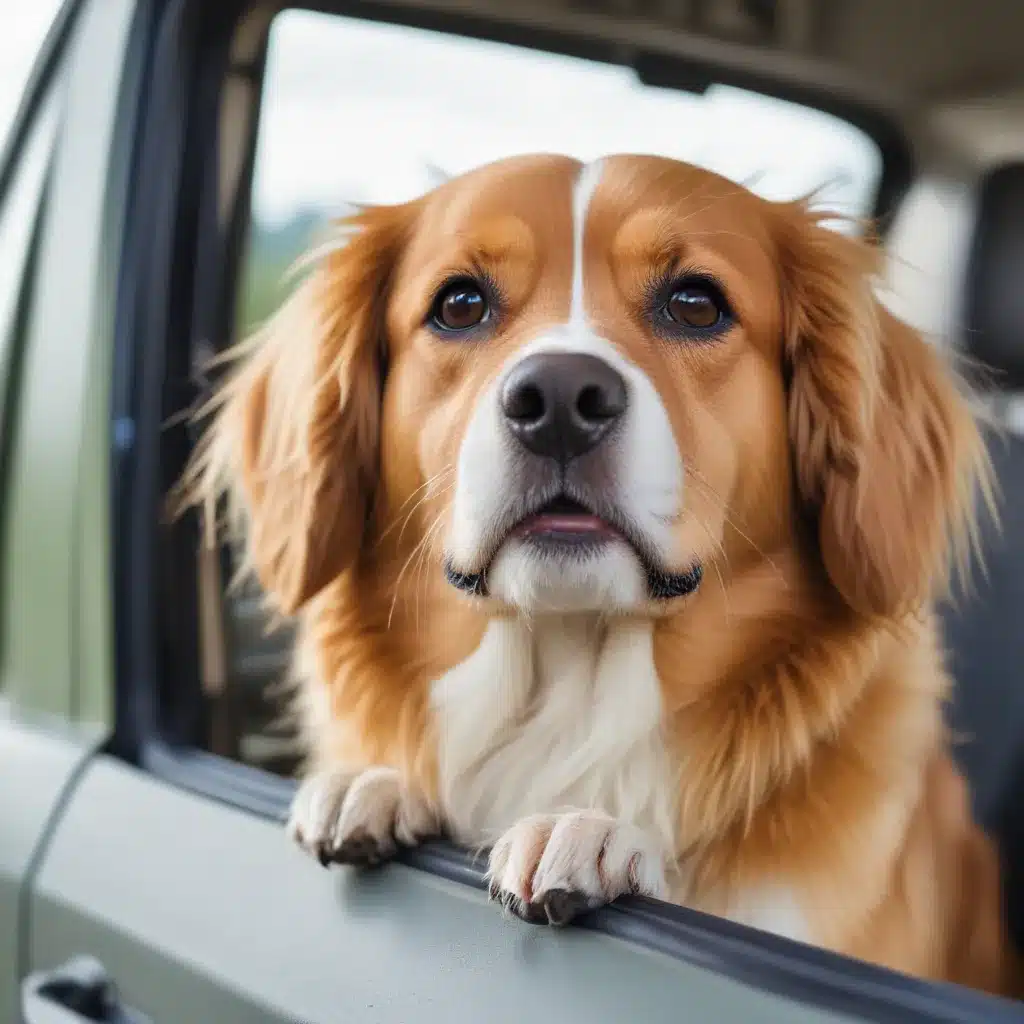
The Dreaded Car Ride
Ah, the family road trip – a time-honored tradition that brings us closer together as we navigate winding roads and scenic vistas. But for many dog owners, these joyful excursions can quickly turn into a canine horror show. I’ll never forget the time I took my pup, Buddy, on a short drive to the vet. As soon as we hit the road, he started whining and pacing in the backseat. Before I could say “seatbelt,” he had unleashed a torrent of partially digested kibble all over my brand new upholstery. I swear, the stench lingered for weeks.
If this scenario sounds all too familiar, you’re not alone. Car sickness is a surprisingly common issue for our four-legged friends. In fact, it’s estimated that up to half of all dogs experience some degree of motion sickness, especially when they’re young. But don’t worry – with the right strategies, you can help your furry copilot overcome this upsetting affliction and enjoy the open road.
What Causes Car Sickness in Dogs?
So, what’s really going on when Fido starts turning green (or at least, as green as a dog can turn) in the backseat? In most cases, it comes down to an imbalance in the senses.
According to VCA Animal Hospitals, the inner ear structures responsible for balance aren’t fully developed in young pups. This means that the brain is receiving mixed signals – the eyes tell it that the dog is stationary, while the inner ear senses the constant motion of the vehicle. This discrepancy can trigger the vomiting reflex, leading to that oh-so-unpleasant car ride experience.
But it’s not just immature inner ears that can cause car sickness. Some dogs, like humans, simply never outgrow their susceptibility to motion-induced nausea. According to the American Kennel Club, canine car sickness can also be linked to anxiety and past traumatic experiences. If your pup’s first few rides ended in a vomit-filled fiasco, they may start to associate the car with that unpleasant sensation, leading to a self-reinforcing cycle of sickness and stress.
Combating Car Sickness: Proven Strategies
Fortunately, there are several effective strategies you can employ to help your dog overcome their motion-induced misery. The key is to take a slow, patient, and compassionate approach. Remember, Fido isn’t making a mess on purpose – they’re simply struggling with a very real physiological and psychological challenge.
Gradual Exposure and Conditioning
One of the most important steps in addressing car sickness is to gradually acclimate your dog to the vehicle. As recommended by the experts at WoofPurNay Veterinary Hospital, start by simply having your pup sit in the car with the engine off, rewarding them with treats and praise for calm behavior. Once they’re comfortable with that, try starting the engine and letting it run for a few minutes without going anywhere.
Slowly work your way up to short trips around the block, gradually increasing the duration and distance as your dog becomes more relaxed. The key is to never push them past their comfort level – if they start showing signs of distress, such as whining or drooling, stop the training and try again another day.
Motion Sickness Medications
For some dogs, conditioning alone may not be enough to overcome their car sickness. In these cases, your veterinarian may recommend the use of anti-nausea or anti-anxiety medications to help ease your pup’s discomfort.
According to WebMD, common over-the-counter options include medications like Dramamine or Benadryl, while prescription drugs like Cerenia can also be effective. Always be sure to consult your vet before giving your dog any new medication, as the appropriate dosage can vary based on your pup’s size and individual needs.
Other Helpful Tips
In addition to gradual conditioning and medications, there are a few other tricks you can try to make car rides more comfortable for your furry friend:
- Withhold food for 3-4 hours before travel to help reduce nausea
- Use a well-ventilated crate or carrier to keep your dog secure and contained
- Crack the windows to provide fresh air and balance the cabin pressure
- Bring along your dog’s favorite toys, treats, and bedding to provide comfort and distraction
- Take regular breaks to allow your pup to stretch their legs, hydrate, and relieve themselves
With patience, creativity, and a little help from your vet, you can help your four-legged copilot overcome their car sickness and enjoy the journey. And who knows, maybe one day you’ll even be able to take them on that cross-country road trip you’ve always dreamed of.
In the meantime, why not start planning your next adventure by visiting I Have Dogs – the ultimate resource for all things canine, from adoption to training and beyond. Happy (and hopefully vomit-free) travels!

